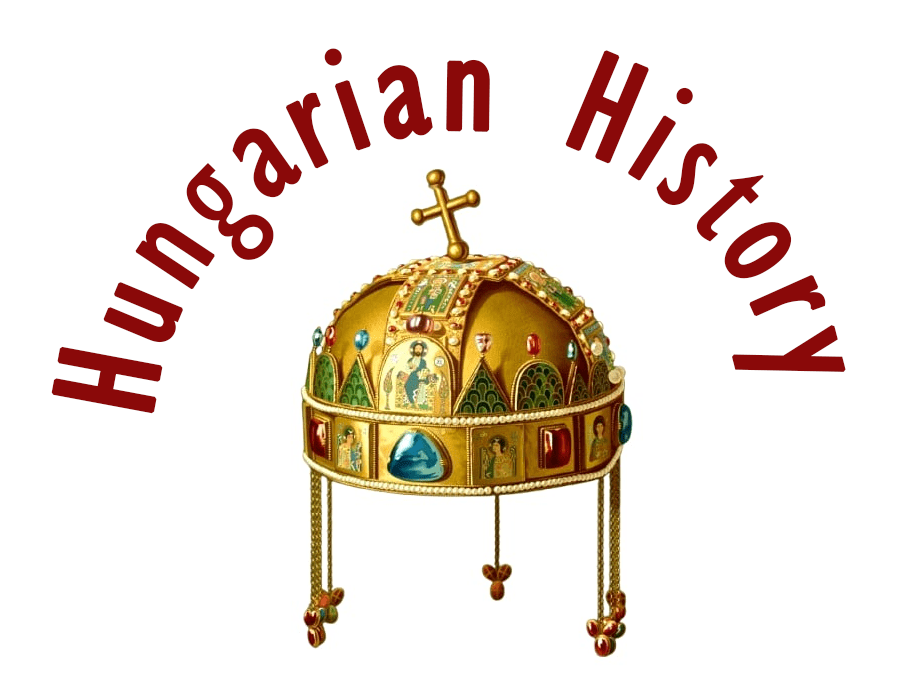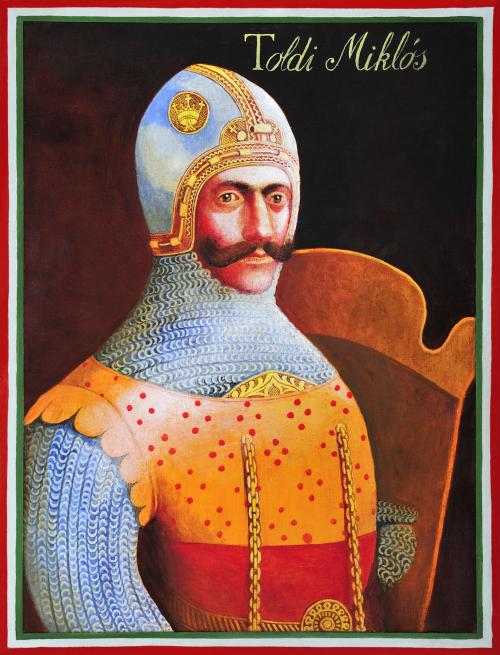
One of the best-known works of Hungarian literature is the narrative poem “Toldi” by Arany János, and the “Toldi trilogy” (Toldi, Toldi’s Love, Toldi’s Evening). He was a great hero who served under the flags of King Lajos and King Zsigmond and had immense physical strength. However, the biography of the real Toldi Miklós can only be partially revealed based on the sources, as only sporadic data can be found in the documentary sources. At the beginning of his career, he may have served in the family of Meggyesi Simon. He first appeared in documents in 1351 as a deputy Comes of Sáros County.

At this time Meggyesi Simon also held the title of Comes of Sáros in addition to several other titles of county chief (Győr, Bakony, and Szepes), but the actual administration of the county was entrusted to his loyal man, Toldi Miklós, by the practice of the time, it follows that Toldi was a follower of the family of Meggyesi.
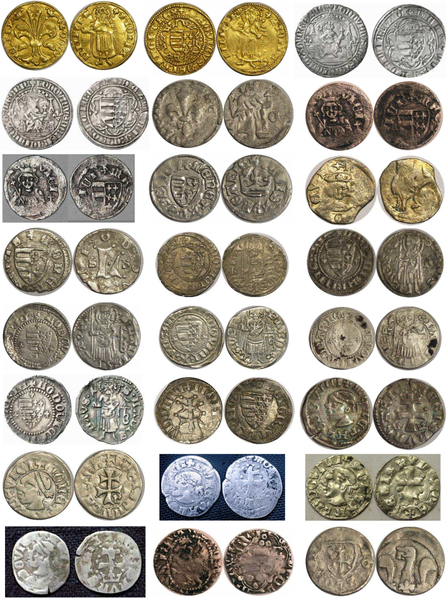
On 11 December 1351, Meggyesi Simon was already listed as the Comes of Pozsony. A few months later, on 20 April 1352, Toldi was already holding the title of Deputy Comes of Pozsony and the title of Castellan of Pozsony, which shows that he had performed his previous duties as a deputy well, since Meggyesi had entrusted Toldi with the administration of the more populous and, in terms of prestige (and of course, income), more important county.
Since Meggyesi took part in King Lajos the Great’s campaign to Naples in 1351-52, we can assume that Toldi was also in his retinue.

As the deputy Comes of Meggyesi, we have records of Toldi’s activities until October 1354. Shortly afterward he entered the service of the country’s number one ecclesiastical leader, the Archbishop of Esztergom, where he no longer had to perform administrative tasks, but lived as a knight (“professional soldier”) in the Archbishop’s immediate environment, receiving his provisions in money and food.

As the archbishop’s vassal, was almost constantly in the king’s entourage. In 1359, he was commissioned by his master to fetch two lion cubs from Florence. In 1363, King Lajos I appointed Toldi to lead a campaign to defend the Holy See’s possessions. The campaign was a victory over the troops of Milan, which had invaded the papal territories.

After completing his mission, Toldi probably remained in Italy as a mercenary, for in 1365 he was one of the leaders of the so-called “White Troop” or “White Company” of English and Hungarian knights. The complicated political situation in Italy is not discussed here, but one of the features of the fighting was that it often involved the services of mercenaries. Fortunately, the treaty of 14 January 1365, in which Cardinal Albornozi Egyed, the papal envoy, accepted the service of the ‘white troops’ for six months against the German mercenaries of Hannes Baumgarten, who was in the service of Pisa, has been preserved for our times.

In the letter of commission, the name of the English commander-in-chief was immediately followed by the name of Nicolaus comes Thodi de Ungarus (Count Thodi Miklós of Hungary), which suggests that Toldi may have been the commander of the Hungarian part of the force. Since 20 English and 10 Hungarian commanders took the oath after the treaty was signed, it can be concluded that one-third of the army was Hungarian. Since the army numbered 5,000, Toldi was therefore in command of an army of about 1,600 men, of whom about 1,000 were probably well-equipped heavy cavalry soldiers. Some of the archers in the Hungarian company may have been Cuman warriors.

An army of this size was of considerable military value in its time, and its leader could only be someone who had already achieved serious military merit. The army received 160,000 gold florins for six months. By the practice of the time, the monthly salary of a commander was three times that of a soldier on horseback, usually 20 gold pieces yearly between 1350 and 1360. This was a very handsome sum; some 50 years earlier, the annual salary of a university professor in Bologna was 33 forints (2.75 per month), while the treasurer of the papal state received 8 forints per month.

The troops (perhaps Hungarian archers and English or Welsh bowmen?) taken into the papal service first raided Sienese territories and then turned against the German mercenaries who were ravaging the papal territories, but they were so rampant that the Cardinal finally disposed of their services and took the former enemy, the German mercenaries, into his mercenary service. This turn of events was not unusual in the complex politics of 14th-century Italy. In any case, on 22 July 1365, the white troops suffered a decisive defeat at the hands of the Germans and most of their leaders, including Toldi, were taken prisoner on 22 July 1365.
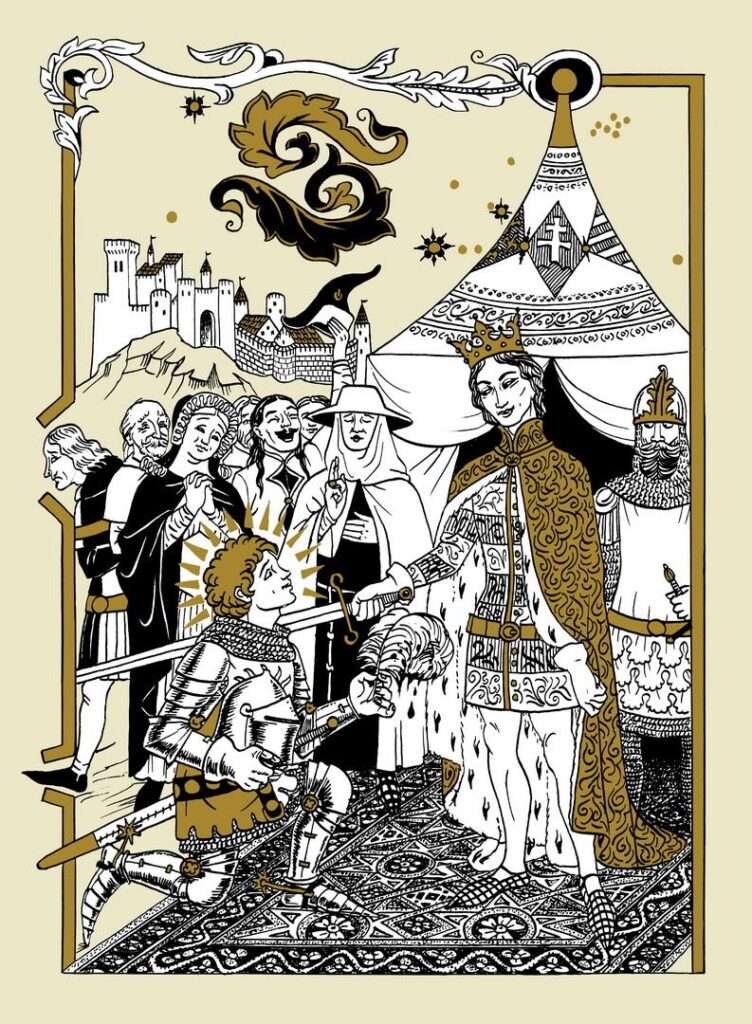
We have the document in which Toldi swears obedience to the Cardinal in exchange for his freedom. We know that the White Company fought at this time against another company under Konrad von Landau. In William Caffero’s biography of Sir John Hawkwood, he says there were Hungarians in both companies. They refused to fight each other and the group in Konrad’s company left the field leading to his death.

Miklós came home in 1366 and he was at once appointed as the Comes of Gömör County by the king. He used to be the Comes of Gömör until 1371. He became a vassal of the king, and thus a member of his feudal family, and stayed permanently in the entourage of King Lajos the Great. Miklós became the Vice-Comes of Zala County between 1372 and 1373. Also, he was the Vice-Comes of Bihar County between 1377 and 1382, it was the time when his family took hold of the village called Nagyfalu.

Then, between 1383 and 1385, he was the Vice-Comes of Szabolcs County. King Zsigmond awarded him the settlement of Daróc in Szatmár County. We know he had two sons by this time, György and János. The last record about Toldi Miklós is that he exchanged Daróc for the settlement called Bátor in Bihar County in 1390. Was he or his sons with King Zsigmond in the Battle of Nicopolis in 1396? It remained to be seen.

Arany János, the most famous Hungarian poet of the 19th century wrote a trilogy about his deeds. According to tradition, the Stump Tower (Csonka-torony) near Arany’s hometown of Nagyszalonta had been owned by the Toldi family. In folklore, Toldi has been remembered the longest in Nógrád and Bihar County and they emphasize his physical strength but place him a century later in the age of King Matthias Corvinus.

The fact that Toldi did not achieve higher country dignity was perhaps the result of the fact that it was not his political sense and abilities, but rather his military merits and deeds that won the recognition of the ruler. However, a letter from 1388 shows the prestige he enjoyed at the royal court, as the document states that he had given a 10,000 forint deposit for the Ilsvai Lesták under a contract probably concluded in 1387, in which his fellow guarantors were members of wealthy families such as the Perényi, Rozgonyi, and Lévai.
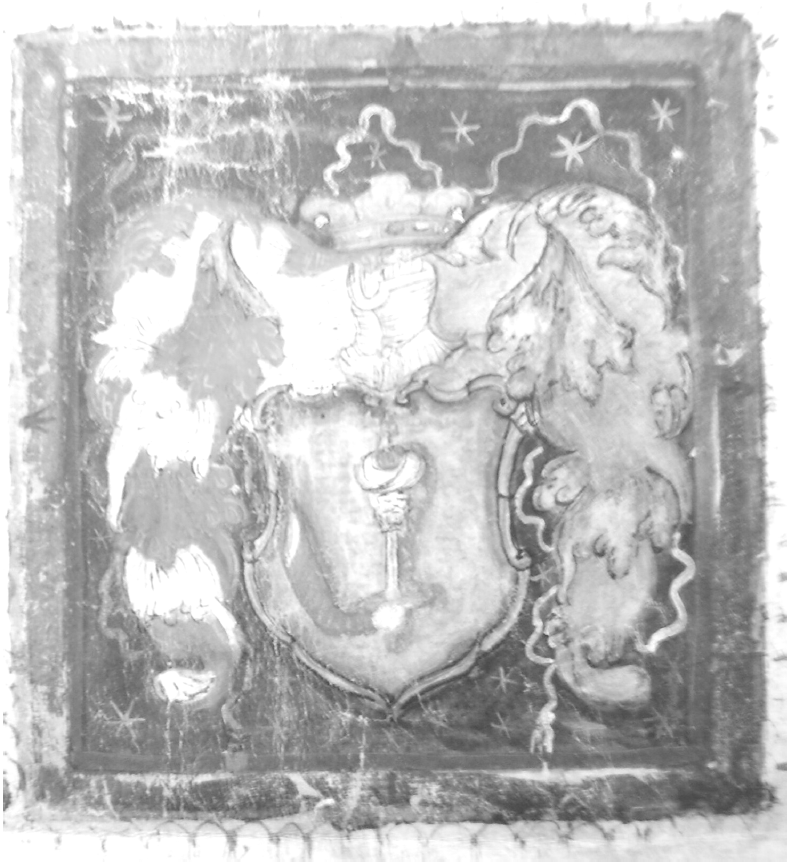
In 1387, Toldi Miklós received the Daróc estate in Szatmár county from King Zsigmond as a donation, and around 1390 he exchanged it for the Bátor estate in Bihar county. This is the last known record of the life of Toldi Miklós.

What is mentioned in Arany’s poem and can be verified in reality is that Toldi Miklós did indeed have a brother named György (we do not know whether he was his brother or his younger brother), who held the title of Bihar’s Comes between 1377 and 1382. The details of the second and third parts of the Toldi trilogy (Toldi’s Love, Toldi’s Evening), or at least his presence at the royal court, can be confirmed from the sources.

It is also true that Nagyfalu was in the hands of the Toldi family, but the other details in the first part of the trilogy – his conflict with his brother, his fight with the wolves, his duel with a Czech knight, etc. – cannot be confirmed by historical sources, although his duel with a Czech knight at a jousting tournament cannot be ruled out.
You can read about Nagyszalonta on my page, too: https://www.hungarianottomanwars.com/transylvania/nagyszalonta/
From the above biography, it is clear that the figure of Toldi Miklós corresponded to the life of the heroes of the Western knightly tales, his person was suitable to become the central character of the Hungarian adaptation of the works: the hero from a noble family has a brilliant career through his strength, perseverance, and loyal service.
Source: https://adatbazisokonline.mnl.gov.hu/gyujtemeny/oklevelek

Dear Readers, I can only make this content available through small donations or by selling my books or T-shirts:
Please, support me with a coffee here: https://www.buymeacoffee.com/duhoxoxa
You can check out my books on Amazon or Draft2Digital, they are available in hardcover, paperback, or ebook:
https://www.amazon.com/dp/198020490X or at https://books2read.com/b/boYd81

My work can also be followed and supported on Patreon: Become a Patron!http://Become a Patron!
Become a Patron! and donations can be sent by PayPal, too: https://tinyurl.com/yknsvbk7


https://hungarianottomanwars.myspreadshop.com/all
Subscribe to my newsletter here: https://tinyurl.com/4jdjbfkn
